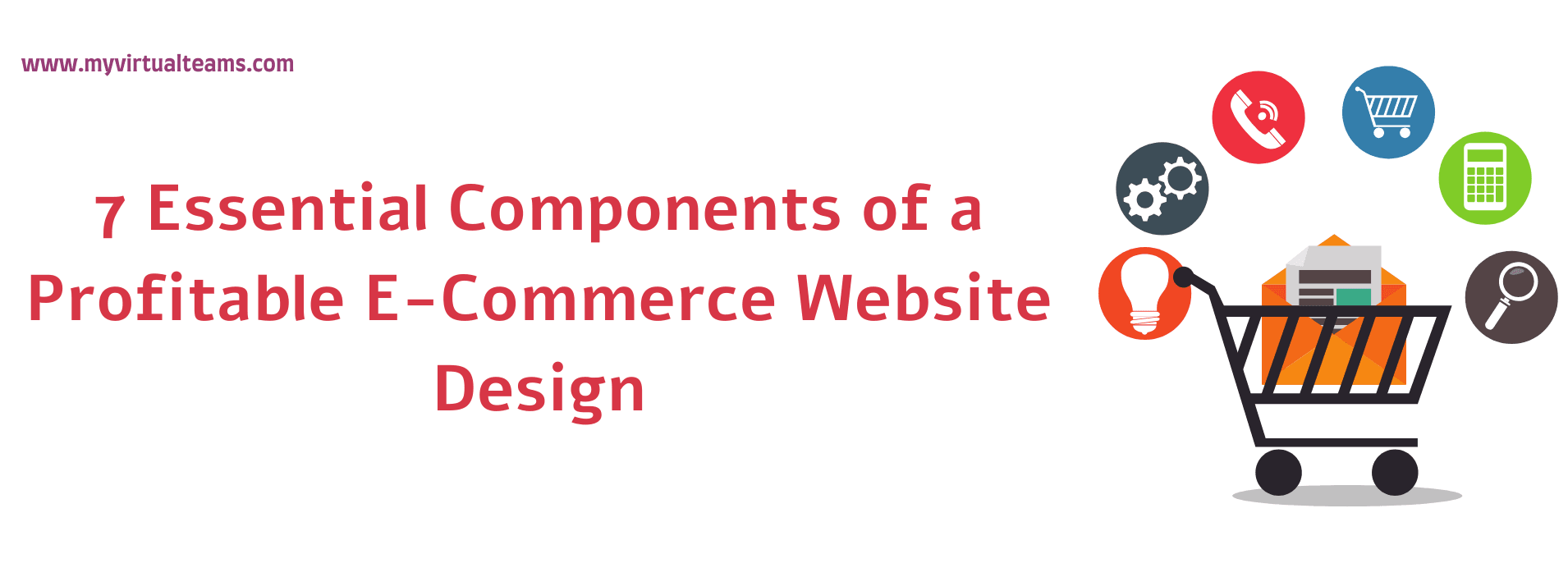
7 Essential Components of a Profitable E-Commerce Website Design
What should I look for in E-commerce development? The design and style of your e-commerce website design may significantly affect sales. Usability is crucial. If clients can’t quickly locate the things they’re looking for, they’re unlikely to spend hours searching your site when they can find them elsewhere with a simple Google search.
However, it is not only about convincing your clients to click the “Add to Cart” button. Your e-commerce site must give accurate information at each step of a customer’s buying process, allowing them to make educated judgments throughout the research, interest, and validation stages. An E-commerce website development company can help you develop the best design for your online store.
The seven recommendations below will help you create a helpful, engaging, and visually appealing E-commerce development that achieves just that.
Key Features of an Effective E-Commerce Website Design
Clear Calls to Action
The top-featured banner spot on an e-commerce website design is the most sought-after. Typically, a slider fills this slot. Do you need a slider on your homepage? Don’t put three or five slider photos on your site because everyone else does. Ensure the action is apparent and these photos emphasize a popular product or category, advertise a discount, or emphasize a distinctive feature of your items or brand. Give customers a genuine incentive to click, boosting customer trust and loyalty, rather than filling that area with clickbait or unnecessary information that wastes a user’s time.
If you have a new or unknown brand, consider replacing the slider with a static picture with text that informs visitors about who you are and why your company exists. This is an excellent opportunity to emphasize your company’s goal and get consumers based only on the mission statement. This single-picture technique also emphasizes a particular category or activity.
Whatever strategy you choose, e-commerce development should be based on heatmap monitoring following launch to ensure that you genuinely assist the user in completing their task(s).
Include High-Quality Product Images
Allow your consumers to get familiar with product specifics and E-commerce website design. Show your goods from several perspectives, emphasizing any key or distinguishing qualities.
Incase does an excellent job with this on their product sites. They provide photographs of their bags and cases’ front, back, sides, and inside. They also incorporate customer-generated photographs that emphasize various viewpoints or show items in real-world scenarios. These features are necessary for your e-commerce development.
Test Lifestyle Versus Product Imagery
Some companies (e.g., furniture, apparel, outdoor gear) may have better success displaying their items in real-world situations. This may help clients provide design or use ideas for the product and create a stronger emotional connection.
Other items like laptops or gaming consoles may benefit from a white backdrop to make product features and details more visible. To properly understand which style of imagery is ideal for your brand, do A/B or multivariate testing to see which performs better. The E-commerce website development company has experience in product imagery.
Show Related Products
Merchandising goods by displaying comparable items, products seen by other consumers, or associated components and accessories is most important for a good e-commerce website design.
Redington, a fly fishing firm, displays related and popular items in a simple, attractive way at the bottom of each product page. This company is the best example of e-commerce development.
Show Customer Ratings for Various Product Features
In addition to having reviews on product pages, one unique and beneficial option to give consumers feedback is to provide extra product information. Consider including a scale for “runs true to size,” “actual colors match online swatches,” and so forth. This allows consumers to see precisely what they are receiving at a glance, thereby reducing bad reviews in the future.
Create Intuitive and Useful Site Navigation
Organize items into appropriate categories and subcategories. Allow consumers to quickly locate what they’re searching for and search for other goods. You should have, on average, at most five or six parent-level categories.
If you have more than five or six, try grouping them into bigger groups. Only some consumers will see your e-commerce business on a giant screen. They are more likely to utilize a mobile device, and reducing navigation will make the whole experience more pleasant. As with most other suggestions below, this is an excellent place to undertake user testing or keyword optimization.
Checkout
This is a crucial feature of an E-commerce website. If not correctly implemented, none of the preceding pieces will be helpful. Several things contribute to a positive checkout experience. The most significant are speed, guest checkout, simple form completion, progress indications, and a permanent cart summary.
Conclusion
You should test and iterate on these aspects rather than take our word for it. Test various e-commerce website design aspects to guarantee you get the most out of your e-commerce platform. Every website development company is unique, and you may discover new best practices when doing A/B testing. You should perform A/B testing for your e-commerce development.
A/B, or multivariate testing, is a low-cost and effective technique to properly understand what works for your site and what your consumers want to see. An e-commerce website is only partially complete. The objective should constantly refine the route for the user to get the information they need and finish their activity effectively.
